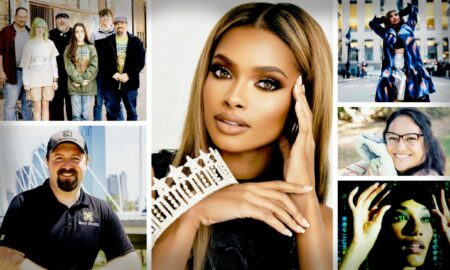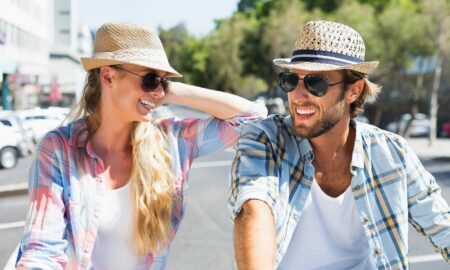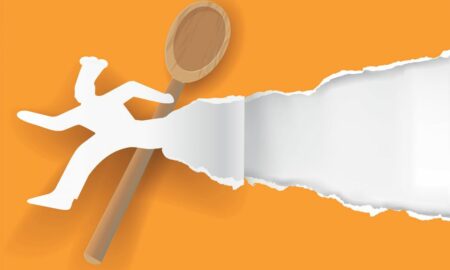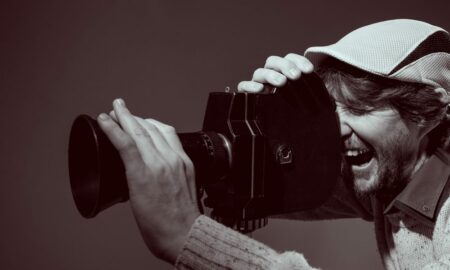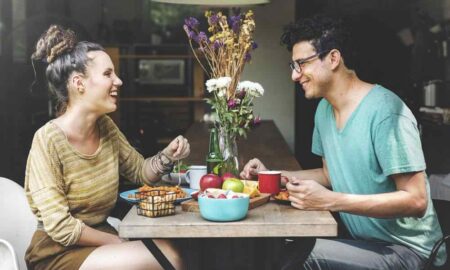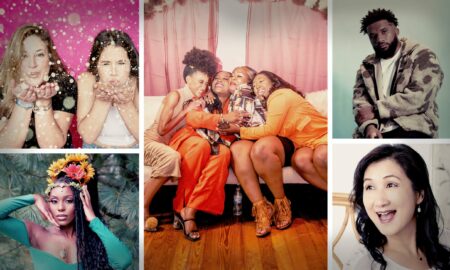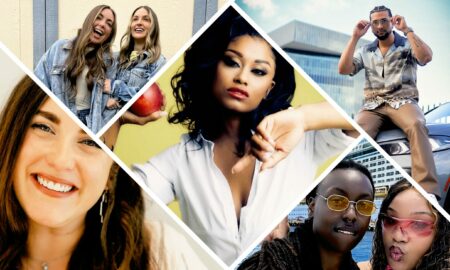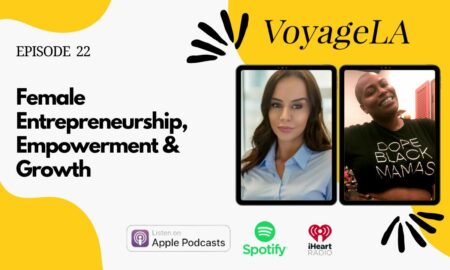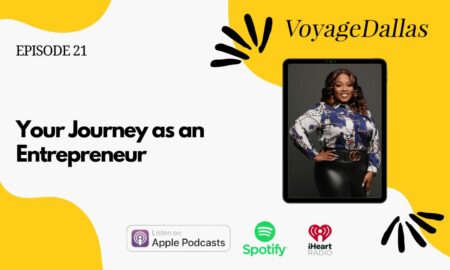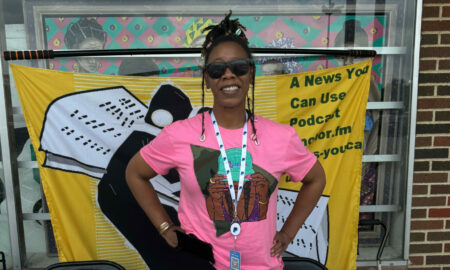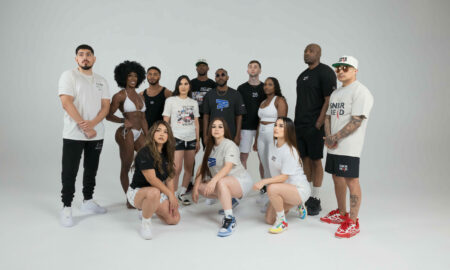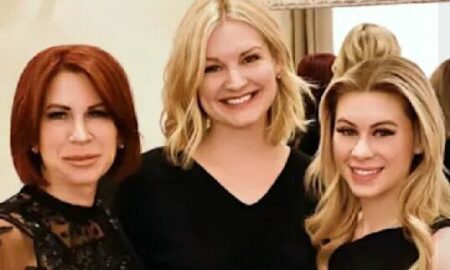

Today we’d like to introduce you to Jordan Black.
Every artist has a unique story. Can you briefly walk us through yours?
I’m definitely a product of my environment. Having grown up in Dallas, my dad, who drew newspaper comic strips in college, has always been my biggest supporter and certainly laid the foundation for my love of drawing. Some of his favorite artists are Charles M. Schulz, Norman Rockwell, and the Looney Tunes – and his art reads that way, I think. His staple is animal caricatures with big, fat cigars. We drew together constantly when I was a kid – we still do. My first portraits were countless Bugs Bunny heads that he tutored me on in MS Paint with a desktop mouse when I was 5. Silly as it sounds, a lot of my general understanding of facial structure and muscle movement is seeded from seeing Bugs’ cheekbones articulating under his eyes when he smiled.
My Mom’s midwifery practice is another distinctive influence. She’s been practicing now for over 15 years. Around the age of 10, I was tagging along to home-births, reading through her anatomy text, and hearing emotional testimonials from women who saw extreme physical, emotional, and psychological changes. This all certainly changed how I looked on drawing people. I’m less interested in rendering a likeness than describing emotive people of varying sizes, silhouette, and stories – with a subtle feminine touch. Over time, these wants have become more visceral, and guide a lot of my decisions when it comes to forming language in my drawings. My artwork has constantly ebbed between heightened expressive designs and more subdued, classical realism. I am now coming to a place in my work where I am able to combine elements in ways I never anticipated – taking inspiration from the beauty of the human form, as well as my own interests in Creature Design (I’m talking big monsters), botany, and animation (I’ve been on a Ralph Bakshi kick right now, but it definitely varies.) I am now a second-year Graduate Student at the University of North Texas, studying Drawing and Painting, and also pursuing a certificate in Museum Education.
Please tell us about your art.
My tool of choice for a while now has been ballpoint pen on paper. I don’t typically plan a piece beforehand – in fact, I usually close my eyes during the first few minutes and let my hand have at it. Then I build on top of whatever I see. I spent a major part of last year developing multiple small paper pieces, which were sort of like one-shots of characters – but recently I’ve been working on much larger surfaces, experimenting with more opaque pens, and focusing on the environments as much as the characters, which I’ve been enjoying quite a bit.
It’s difficult to create evocative figurative work that doesn’t have a story driving the intent of the character. My art practice is just as much focused on narrative as it is on drawing quality. However, instead of developing singular characters with distinctive personalities and identities, I see the figures in my drawings as “organic materials” in a world that is built from their own flesh – like studies of a new species that will come when We’re gone. They are practically hairless, seemingly boneless, and if you were to grab hold of one, the texture would be something similar to a sand-filled balloon. These “Sandbag” creatures live in a world that’s void of human-made accessories like currency, aesthetic, and occupation, and they’re broken down to bare minimums of a flexible physical form, basic motor functions, and simple emotional capacities.
Born from the dirt, the “Sandbags” travel over a broad desert landscape, and as they find each other, they begin to form into solid bundles until they become part of the land – like mountains that are constantly moving. Lately, I’ve been really focused on these breathing mountain ranges, and how they seem to function as a simplified societal structure. The eldest Sandbag within the mountain is like a God, and when new forms enter, the eldest undergoes a decomposition, moving away from the peak and being absorbed back into the ground. The figurehead is constantly being removed and is never permanent.
Although they tend to have a graphic, almost body-horror approach in how they treat one another, I don’t see these creatures as murderous or overtly violent. Instead, they are usually somewhat gentle, or even unresponsive, in their physical conversations. They also tend to convey varying levels of sexual undertones. I’m interested in personifying “carnal instincts” in figures, and it leads to a lot of strange, compelling shapes when they mash their bodies together. I never quite know their full intentions, and that bit of anonymity keeps them intriguing in my eyes.
Although the narrative is an odd fantasy, it is certainly inspired by current realities. I would consider myself a sensitive person, and particularly in a time where so many are feeling unsafe and persecuted, my work certainly reflects on current day power-struggles – perhaps developing a strange, idealized one. Living in a southern state, as a woman who has been dating another woman for almost ten years, I am surrounded by conversations about unmoving systems, and communal responses of frustration and uncertainty… In that way, the exclamatory nature of my drawings tends to absorb those frustrations, house them into something that has become extremely leveled, and also allows me to study the alluring nature of the human form.
What do you think is the biggest challenge facing artists today?
A general struggle that I’m sure other artists can relate to is knowing that the legitimacy of art is often questioned. I don’t necessarily mean debating whether a drawing is “good” or “bad”, but simply the idea that art is not important or needed in everyday life. For me, it starts with funding art in schools. I was fortunate to have art all throughout my elementary to high school career, I don’t know who I would have been without it – the idea that art is “optional” in life is such a morose reality. I can certainly concede that we as artists can always do better to make the presentation and discussion of artwork more accessible to the public – as well as making it clear that our work can be important to topical discussion and reflection, but this struggle also comes from the myth that art is simply a hobby, an interest, a fun way to spend an afternoon.
We as artists need to consider the ways in which our work can bring forth a discussion, or at least acknowledge that our work is not safe from being reflected upon and politicized. I see tons of beautiful work constantly about bodily autonomy, the environment, equality, etc. and it resonates with people because art and entertainment are crucial to societal change. I am heavily aware of how terrifying it can be to surrender ideas and physical effort to the public, so because of this, artists should be encouraged to share in order to become more receptive and bolder in their decisions.
How or where can people see your work? How can people support your work?
I post a lot of my drawing progress on my social media, and I also present my work on my website. As I am currently working full-time with my graduate studies, the best way to reach me with inquiries or curiosities would be via email.
Contact Info:
- Website: jordanblackart.com
- Email: jordan.n.black@gmail.com
- Instagram: https://www.instagram.com/keyofheartless/
- Facebook: https://www.fb.me/ceruleanwomen







 Image Credit:
Image Credit:
Melissa Gamez-Herrera, Jordan Black
Getting in touch: VoyageDallas is built on recommendations from the community; it’s how we uncover hidden gems, so if you know someone who deserves recognition please let us know here.

